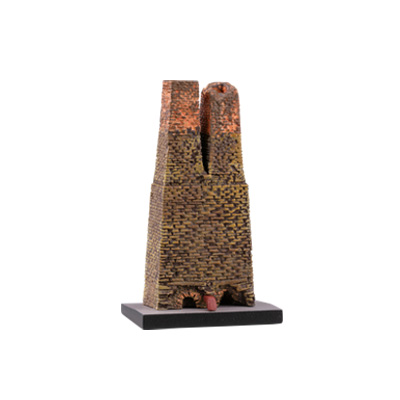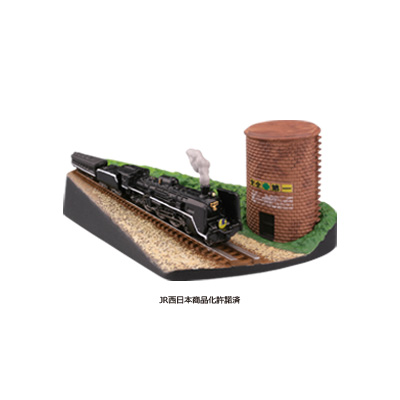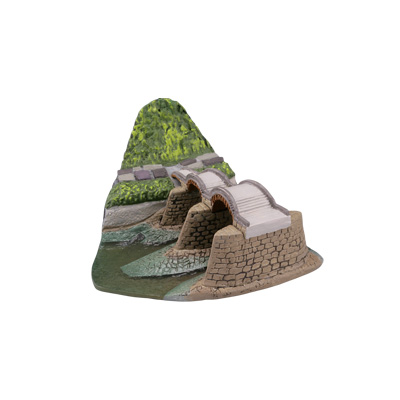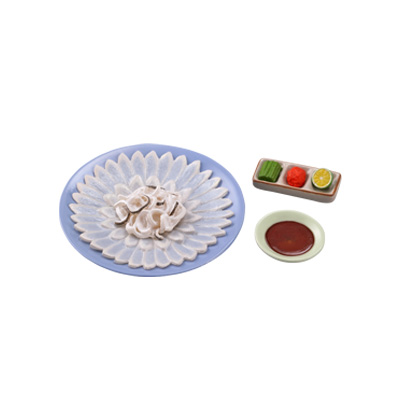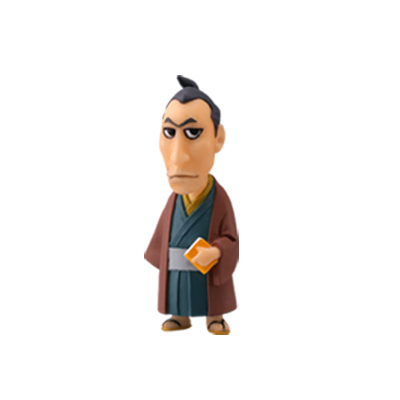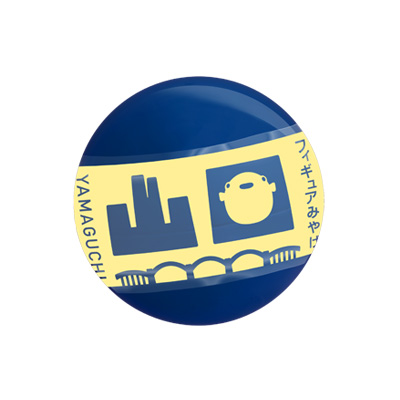-
荻反射炉 / Hagi Reverberatory Furnace
萩反射炉は、鉄製大砲鋳造を目指した萩藩が1856年(安政3年)に西洋技術の情報をもとに独力で建設した金属溶解炉。現存しているのは煙突にあたる部分で、日本の産業の近代化を象徴する貴重な遺構である。2015年(平成27年)には「明治日本の産業革命遺産」のひとつとして世界遺産に登録された。
Hagi Reverberatory Furnace is a smelting furnace for casting iron cannons.
It was constructed by the Hagi Domain in 1856, based on information about Western technology.
The remaining ruins include only the chimney portion.
Yet this is a significant remnant that symbolizes the modernization of Japanese industry.
The furnace was registered as a World Heritage site in 2015 for its role in Japan's industrial revolution during the Meiji era. -
SL「やまぐち」号と篠目駅 / SL Yamaguchi and Shinome Station
SL「やまぐち」号は、新山口−津和野の62.9kmを約2時間かけて運行。1937年(昭和12年)に製造されたC571号機は傑作機のひとつとされ、「貴婦人」の愛称で親しまれている。篠目駅には1922年(大正11年)に建設されたレンガ造りの給水塔が残っており、SLが入線してくる光景はSLが活躍していた時代の情景を思わせる。
SL Yamaguchi runs between Shin-Yamaguchi and Tsuwano.It takes about two hours to travel the total distance of 62.9 km.The C571 was manufactured in 1937 and is considered to be a masterpiece, affectionately known as "the Lady."The brick-built water tank constructed in 1922 still remains at Shinome Station. The sight when SL Yamaguchi approaches the station is reminiscent of the steam locomotive heyday.
-
錦帯橋 / Kintaikyo Bridge
山口を代表する観光スポットのひとつ。錦帯橋は5つの木造の橋が連なり、中央の3連のアーチ橋が特徴的。度重なる流失に遭ったことから発展した独自の架橋技術は、江戸時代以来、300年以上に渡り受け継がれている。春は桜、夏は鵜飼いや花火の夜景など、四季おりおりの美しい景観が楽しめる。
Kintaikyo Bridge is one of the major tourist destinations in Yamaguchi Prefecture.It consists of five wooden linked-bridges, and its unusual middle section features three linked-arch bridges. The unique cross-linking technique was devised because the bridge had been washed away on a number of past occasions. The bridge has continued to provide a crossing for more than 300 years since the Edo era.From the bridge you can admire the beautiful scenery of each season, including cherry blossoms in the spring and cormorant fishing and fireworks on summer nights.
-
下関のふく(ふぐ) / Fugu (puffer fish) in Shimonoseki
高級食材で知られる「ふぐ」の本場・下関。ふぐ食の先駆けの地であり、取扱量日本一の「ふくの町」である。(下関ではふぐを「ふく」と呼ぶ。)代表的なふく料理といえば、ふく刺し(てっさ)。皿のもようが透き通って見えるほど薄く引いたふく刺しを、花のように美しく盛る職人技も、ふく料理の見どころのひとつ。
Shimonoseki is the home of fugu, or puffer fish, a renowned luxury ingredient.This is where fugu dining was first introduced, and it is the site of the largest trade in Japan.Sashimi (Tessa) may spring to mind as one of the major dishes prepared with fugu.The thinly sliced, transparent sashimi are beautifully presented on a plate in the form of a flower. One of the highlights is admiring the craftsmanship that produces sashimi so thin that the pattern of the plate is still visible.
-
金魚ちょうちん / Goldfish lanterns
山口県柳井市の郷土玩具。幕末の頃、柳井の商人が子供のために金魚をかたどり伝統織物「柳井縞」の染料を用いた提灯を作ったのがはじまりといわれる。お盆に開かれる「金魚ちょうちん祭り」の期間には、白壁の軒下に愛らしい金魚ちょうちんがゆらゆらと揺れ、紅白のコントラストで街中が美しく彩られる。
Goldfish lanterns are folk toys made in Yanai City, Yamaguchi Prefecture.The goldfish-shaped lanterns are believed to have been originally made for children by merchants at the end of the Edo era using Yanaijima dye, the traditional textile produced in Yanai City.During the Goldfish Lantern Festival held as part of the Obon Festival, you can see adorable goldfish lanterns hanging from the eaves of white-washed houses. The streets are decorated with the beautifully contrasting red and white lanterns.
-
伊藤博文 / Hirobumi Ito
松下村塾の塾生で高杉晋作らとともに活躍した長州藩士。イギリスに密航留学し西洋文明を学んだ「長州ファイブ」の1人で、後に初代内閣総理大臣として憲法制定など日本が近代国家となる礎を築いた。また、当時食用禁止だったふぐを下関で自ら食し、全国に先駆けて山口県でふぐ食を解禁させたという逸話も。
Hirobumi Ito was a student of Shokason-juku as well as a feudal retainer of the Choshu Domain, who played a leading role in the era together with Shinsaku Takasugi.Ito was one of the Choshu Five who smuggled themselves to England to study Western civilization.As Japan's first prime minister, he subsequently laid the foundations for the future, including the establishment of a constitution that allowed Japan to become a modern state.According to one anecdote, Ito was one of the first people to try fugu in Shimonoseki.
Consumption of the fish had hitherto been prohibited, but thanks to Ito Yamaguchi Prefecture became the first region in Japan to remove the ban. -
吉田松陰 / Shouin Yoshida
1830年(天保1年)、長州藩に生まれた幕末の思想家。主宰した私塾・松下村塾では高杉晋作、伊藤博文など、後に明治維新で活躍した多くの人材を排出し、その教えは日本の近代化に大きな影響を与えた。学び舎となった松下村塾は、2015年(平成27年)に「明治日本の産業革命遺産」のひとつとして世界遺産に登録された。
Shoin Yoshida was an intellectual who was born in Choshu Domain in 1830, and who was active during the final days of the Tokugawa shogunate.Yoshida educated many activists who went on to play pivotal roles in the Meiji Restoration, including Shinsaku Takasugi and Hirobumi Ito, at Shokason-juku, his private school. His teaching greatly influenced Japan's modernization.Shokason-juku's building was registered as a World Heritage site in 2015, for its role in Japan's industrial revolution during the Meiji era.
-
高杉晋作 / Shinsaku Takasugi
歴史ファンからも人気が高い幕末の英雄・高杉晋作。松下村塾で吉田松陰のもとに学び、後に、庶民をも動員した「奇兵隊」を率いて戦うなど、奇抜なアイデアと行動力で活躍した幕末の革命児。勇ましいイメージがあるが、三味線を常に持ち歩き、つまびきながら歌を唄っていたという粋な人物でもあった。
Shinsaku Takasugi, a hero during the final days of the Tokugawa shogunate, remains popular among history lovers.Takasugi was educated by Shoin Yoshida at Shokason-juku, and subsequently fought wars as leader of the Kiheitai, a volunteer militia that mobilized the common people. He was a man of revolutionary temperament, who had the ability to take action and execute new ideas.He is often imagined as ruthless, yet he was a man of well-cultivated tastes who always carried a shamisen with him and would sing songs while strumming it.
-
山口フィギュアみやげ / YAMAGUCHI FIGURE MIYAGE
近代日本を牽引した偉人を多く輩出した維新のはじまりの地・山口県。歴史と文化、伝統、産業など幕末維新の風情が色濃く残るノスタルジックな山口の魅力をバラエティ豊かにお届けします。
-

